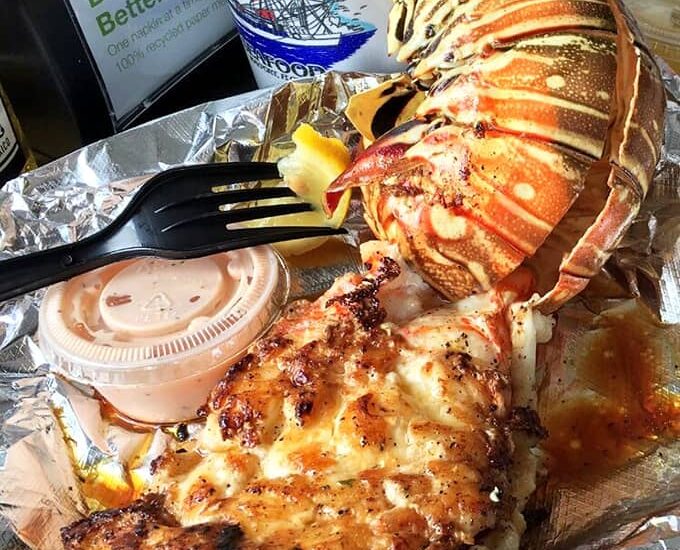You know that feeling when the waiter brings over a bright red lobster, perched on a platter with a little cup of melted butter? It feels like a celebration. There is a ceremony for it. You are not just eating; you are treating yourself to something truly special. It is funny, then, to think that just a couple of hundred years ago, being served lobster was not a treat, and it was a punishment. I find it absolutely wild that this creature, now a symbol of luxury, was once considered barely fit for prisoners. Its journey is one of the most dramatic glow-ups in all of food history, and it is a story I cannot get enough of. Believe it or not, colonial Americans would probably be horrified to see us willingly paying a small fortune for lobster. Back then, these critters were a nuisance. After a big storm, they would wash up on beaches in massive, wriggling piles. They were the ultimate poverty food, so abundant they were practically free. I once read that servants and indentured laborers had contracts that specifically limited how often their masters could feed them lobster. Can you imagine? Tracing the journey of lobster from a rejected commodity to a sought-after delicacy reveals a fascinating tale of marketing, transportation, and changing tastes that reshaped an entire industry. It is a stark reminder that value is often just a story we tell ourselves.
So, how did we get from there to here? The shift started in the mid-1800s, and a lot of it came down to simple geography. When railways began stretching across the country, they opened up a whole new world for seafood. City folks living inland had never laid eyes on a lobster. They had no idea it was considered trash food back on the coast. To them, a can of lobster was an exotic treasure from the deep. It is a classic case of being an outsider having its advantages; ignorance of its humble past allowed lobster to build a brand new, glamorous reputation from scratch. Of course, you can not ship a reputation on a train. You need the real thing.
Technology stepped in, and soon, lobsters were being shipped live in barrels of seawater and seaweed. Then came the game-changer: the lobster tank. All of a sudden, a restaurant could have a tank bubbling away in the corner, and you could point to your dinner before it was cooked. That bit of theater, that personal selection, made the whole experience feel luxurious and exclusive. It was no longer just food; it was an event. But here is the thing: none of this would have stuck without some serious marketing genius. The lobster industry made a very deliberate choice. They stopped showing pictures of fishermen and started showing elegant couples at white-tablecloth restaurants. They positioned lobster as the food for your most important moments: anniversaries, promotions, big successes.

The price tag followed, reinforcing that idea. We were taught to associate lobster with celebration, and we learned that lesson well. I will admit, I have fallen for it myself. Nothing makes a dinner feel more special than seeing that shell cracker and pick arrive at the table. And you know what? The product itself is pretty deserving of the hype. There is something magical about that sweet, tender meat. It has a delicate flavor that just sings with a bit of melted butter and lemon. You have the firm bite of the tail, the softer, almost sweeter meat in the claws, and let us not forget the knuckle meat, a hidden gem that true lobster lovers fight over. Plus, eating a whole lobster forces you to slow down. You cannot be distracted. You have to work for your meal, and that effort makes the reward taste even better. Now, if you ask me how to eat it, that is where the real fun begins.
Are you a purist or an adventurer? For me, a perfect summer day involves a classic New England lobster roll. That is cold lobster meat, just a touch of mayo, stuffed into a buttery, toasted hot dog bun. It is sublime in its simplicity. Then you have the Connecticut style, which is served warm with drawn butter also a winner. Of course, you can never go wrong with a whole steamed lobster, or maybe you are the type who loves it baked and stuffed with seasoned breadcrumbs. There is no wrong answer, only delicious experiments. I would be remiss, though, if I did not touch on the complicated questions we face today. Is indulging in this luxury sustainable? I am happy to report that thanks to incredibly strict regulations, the Maine lobster fishery is a real success story. But then I read about warming ocean temperatures pushing the lobsters further north, and it gives me pause. It is a stark reminder that our choices have consequences. And then there is the ethical question that nags at me sometimes: the practice of boiling them alive. It is something our prison-feeding ancestors would never have pondered, but our elevated view of lobster comes with a responsibility to consider its treatment. Despite these modern complexities, lobster has firmly held its place as the king of celebratory food. The irony is not lost on me that we now cherish what was once despised. But when I crack open that claw and dip the perfect piece of meat into butter, all that history just fades away. At that moment, it was not about status or story. It is just about one of the most delicious experiences on Earth.
References
Helstosky, C. (2008). *Pizza: A Global History*. Reaktion Books. https://www.reaktionbooks.co.uk/display.asp?ISBN=9781861893918
United States Department of Agriculture. (2023). Chicken, broilers or fryers. *FoodData Central*. https://fdc.nal.usda.gov/fdc-app.html#/food-details/171477/nutrients
Parla, K. (2016). *Tasting Rome: Fresh Flavors and Forgotten Recipes from an Ancient City*. Clarkson Potter. https://www.penguinrandomhouse.com/books/246758/tasting-rome-by-katie-parla-and-kristina-gill/
North American Pizza and Culinary Academy. (2022). Pizza Topping Trends and Consumer Preferences. https://www.pizzaculinary.com/

